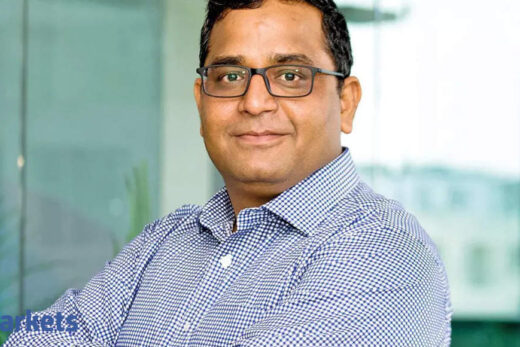Did you see Sensex reaching 50,000 or was the naysayer in you saying that it is going to be a while before we get there?
No, I clearly did not see 50K coming up. At some point, it would have come up but it was not there in the thoughts. It has happened largely because of Covid. What caused the problem, has also caused the solution. It seems very paradoxical but this bull market, not just in India but across the screen in Asia including China has been blowing out the lights, Taiwan, Korea, even Japan which has never done well in the last 30 years, has been a rocket market for the last one year.
So, Covid created a massive problem but that led to the massive stimulus by the US Fed and the other governments. It is a 2008-2009 situation all over again. Following the GFC and massive crash, there was a big stimulus and we saw a 10-year bull market emerging from 2009. Covid did the same thing 11 years on. It is really bizarre that a huge problem like Covid has created this huge bull market.
You have been an old hand in the market. When you entered the Bombay Stock Exchange, the trading used to happen in a ring and the badla system was still on?
Oh! very very much I am very old school. It was an open outcry and it was great fun. About 3,000-4,000 people tightly packed like sardines tearing out each other’s hair and shirts and everything else. But it was real good fun. I really miss those days!
When you took your first steps into this market, did you ever imagine that the index could give such a phenomenal return?
I remember the day I entered the stock market. It was 1988 and I was an Assistant Manager in Citibank and I said that look I am very clear about one thing and that in the next 10 years, India is going to become a massive stock market and a significant market in the context of the global stock market. That was the reason I entered the stock market and in hindsight, it was great timing because when the 90s began and the markets opened up to foreigners and electronic trading, floor to floor trading went out, computers came in, research became sophisticated, foreigners imposed good governance practices on Indian companies and companies became more transparent.
In hindsight was a great time to enter the markets as the markets changed on a secular dramatic basis and all the fruits we are enjoying today are the results of the ground that was laid in the beginning of the 90s. SEBI was born, better regulatory frameworks came in and many things changed.
Is there danger in the market ahead?
I do not think there is danger in the market for a while. Obviously one needs to be careful in the market. Why we are enjoying this current phase of the bull market is because nine months back when Covid created a massive problem, the central banks stepped in to create a massive solution and we are enjoying the fruits of that. The fruits are not going to go away. They are just going to stay there and increase. Around the 38,000-40,000 Sensex levels I was a little circumspect and wondered whether we have just stopped where we have stopped for the last three years. The market was failing to cross the hurdle.
I was a little circumspect around that level and once the market took that out, then it became a pretty straightforward trade. The Covid remained a big problem till October till the vaccine changed a lot of things. So with the vaccine being there, the stimulus being there, the markets having conclusively broken away from their long-term trading range of 38000-40000 and there is a long journey ahead before we start to get seriously worried.
If one has to understand the advantage of indexing or advantage of investing in ETFs, what should be the projected return for a passive investor?
It is very straight forward. Ultimately the markets will mirror what your nominal GDP growth is. The 16% comes up till 2011 or 2012. If you look at returns of the market up to that point, it was very high and the reason was that we had very high nominal GDP growth which in part was because of relatively higher inflation but also pretty good real GDP growth. We were growing at nominal 16-17%; occasionally we grew at 18% also till 2014. Corporate profits were compounding at about the same pace, a little higher and markets were also compounding those rates.
After that, inflation started to cool down and as a result, headline nominal GDP growth rate also cooled down and stock market returns cooled down as well. In the last five-six years, we have seen barely fixed deposit rates of returns on the equity stock markets and therefore none of us got compensated for taking equity risk.
Now what happens in the future? If you believe that India’s long term nominal GDP trend is around 10% because getting to 16% is still a challenge irrespective of what the market index is showing and it is further down the road. So let us settle for a 10% which is respectable. From 2012-2013 till now, returns are maybe 6%. One should expect the future returns to be higher — maybe 15%. So for the overall 10-year period or maybe 12-year period, it comes to 10%.
The last 5-6-year average is very low and so the next 3-5 years’average should be relatively higher — 12% or even 15% to arrive at the longer average of 10%.
The components of the index have also changed. Earlier, it was commodities, textiles, now it is IT, pharma. How do you think the components will change going forward?
I just hope that more Indian start-ups list here instead of going and listing abroad because that is one thing that can lead to a change in this competition. Otherwise, it has become a very static list of companies. Reliance was there even before my time. A lot of other companies like the Tata Group companies are very old school. We need more fresh blood. We need more tech. We need more new generation, new economy, new entrepreneurs entering the stock market and I just hope that Indian start-ups choose to list in India rather than just going to Nasdaq or some other market.
There are quite a large number of unicorns in India — companies which at least on paper are over $2 billion, $5 billion, $10 billion. If they list and hopefully do well in the aftermarket, you can look at a series of newer inclusions into the Nifty in the next 10 years time. I think this market will welcome Indian tech plays. For all those startups which sell in India, would do well here rather than abroad where they are hardly known.
Sometimes I get bored by the same Baja Auto, same Reliance and same HDFC Bank. Let us have some newer companies, it is better challenge intellectually.
Which are the three index stocks you think will be knocked out and three new entrants that you see in the index?
The Adani Group companies have been huge winners last year. Many people have been surprised with that but at least we have some newer companies coming into the fray. As for what goes out, index calculations are simple. Underperforming companies are forced out by the index committees and outperforming companies are brought in. We will see what underperforms this year, in the coming year. I definitely do not see IT going out. I do not see autos going out. We will see. It is a little early to make that call.
Where do you find opportunities in the market given that valuations are heated up in certain pockets ?
There are lots and lots of opportunities. Anybody who tells me that in India you have to own only 12 stocks in a portfolio is a lazy analyst. There are opportunities which have to be carefully evaluated. There is a risk in small companies. We all know that. But even with those risks, it is still a wide basket with a huge selection of companies. India is one of the widest stock markets at least in the developing world where there is a choice of roughly 600-700-800 companies. and with the IPO market being strong, we are going to see more and more companies entering the listed space.
We are really spoiled for choice and we moved away from the Warren Buffett style of one company at a time. We adopt he data science approach. We do not buy human beings any more. We do not buy managements any more. We just buy numbers. We just buy data. It is far easier to deal with data than to deal with human beings. We have dealt with human beings and been wrong more times than we have been right. At least with data you are unlikely to be that wrong. So our approach is very data driven and when you do it on a data basis, you find far more opportunities than as a human analyst you uncover.
There are opportunities in Indian tech for examples. Last year, it was a small segment of the market but you had very good winners in the form of internet plays like IndiaMART or Info Edge. Newer tech companies have joined the fray. India has a small but emerging technology space which is very interesting. Even the old metal companies like Hindalco, Tata Steel, JSW have done phenomenally well for us.
One has to go beyond four banks and five FMCG companies. If you have to buy that, then just buy the Nifty. Why do you have to pay a fund manager or pay us 1% or 2% fees to go and basically try and replicate the Nifty. I put 40% in banks and I will put 15% in Reliance and I will put 10% or 15% in FMCG and say I am a portfolio manager or a mutual fund manager. That cheating people. You have to go out of your comfort zone, do some hard work, pick 20-30 great companies which are outside of your mainline 10-15 companies and think it is very doable. We are doing it.



